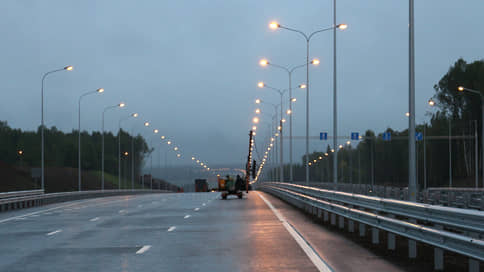The Ministry of Internal Affairs proposes to tighten requirements for traffic management and road design
[ad_1]

In Russia, lighting will become mandatory on expressways, and traffic lights and special dotted markings will be required at diagonal pedestrian crossings. The corresponding draft order of the Cabinet of Ministers was prepared by the Ministry of Internal Affairs as part of the fight against accidents. The Russian government intends to make these, as well as several dozen more recommendatory norms and rules in the field of traffic management, design and operation of roads, mandatory for the industry. Experts supported the innovation, but noted that regions may not have enough funds to comply with some rules.
The draft prepared by the Ministry of Internal Affairs and agreed upon by the Ministry of Transport (Kommersant has read the text) was received by the Government Analytical Center as part of the “regulatory guillotine”. Amendments are being made to Government Order No. 2438, which lists mandatory GOST standards for use by road workers, traffic organizers or designers (remember, standards are advisory by default) in the field of traffic safety.
The order includes clauses of GOST “Roads and streets. Pedestrian safety.” Diagonal crossings must be equipped with special pedestrian traffic lights and dotted markings. The button for calling the green light at the crossing should be located at a height of 0.8–1.2 m. When pedestrians and turning vehicles move simultaneously in the same traffic light phase, the green signal for pedestrian flow should light up earlier than for transport. If a tram stop is located on a single-lane street and passengers disembark on the road, then the roadway at this location must be raised.
The standard “Organization and safety of traffic on highways and expressways” will also become partially mandatory. Sections of highways with a “high” speed limit (up to 130 km/h) must be equipped with artificial lighting, and highways with a “high” speed limit (up to 110 km/h) must be equipped with off-street pedestrian crossings and road barriers. If a violation of GOST is detected (for example, there is no lighting or a broken fence) in any area, the “increased” speed limit is canceled until repairs are completed. The speed should be limited to “standard” values (from 110–130 to 90–110 km/h, depending on the road).
The requirements are aimed at “ensuring road safety, preserving the life, health and property of the population,” the explanatory note to the project says, and will reduce the accident rate (since the beginning of 2023, it has increased by 4.9%). No additional budgetary expenses will be required to implement the document, the Ministry of Internal Affairs says.
“All these standards will certainly improve the level of traffic safety,” agrees Evgeniy Litvin, co-chairman of the “Road Safety” working group within the framework of the “regulatory guillotine.” He emphasizes that the new rules will be respected when designing new facilities, as well as regularly updating traffic management projects. “There is no question that after the order comes into force, hundreds of intersections, streets or decisions in the field of traffic management will have to be urgently redone,” explains Mr. Litvin. “This would require a lot of money.”
“The infrastructure will be brought to new requirements in a planned manner gradually, perhaps even for more than one year,” adds Andrey Mukhortikov, a member of the public council under the Ministry of Transport of the Moscow Region. “Some regions will do this at the expense of their own resources, and some will do this within the framework of the national project “Safe Quality Roads.” ” or in other ways. Even in such a wealthy region as Moscow, there are always transition periods if building rules change.” Mr. Mukhortikov particularly noted the requirement for a raised roadway near tram stops. In Moscow, he says, another solution is more common: when the area for disembarking and picking up passengers is separated and raised, a pedestrian crossing is equipped, and the roadway is widened if necessary. “But this is a relatively expensive and time-consuming option to implement: the draft order apparently includes a more budget-friendly and universal method that can be used by all regions,” explains the expert.
Leading specialist of the Directorate for Traffic Management in St. Petersburg, Dmitry Popov, believes that a significant part of the mandatory standards will be impossible (or difficult) to implement locally, since little money is allocated to the regions for traffic management or it goes “on a residual basis.” “If you want GOSTs to be observed, back it up with funding,” says the expert.
[ad_2]
Source link








